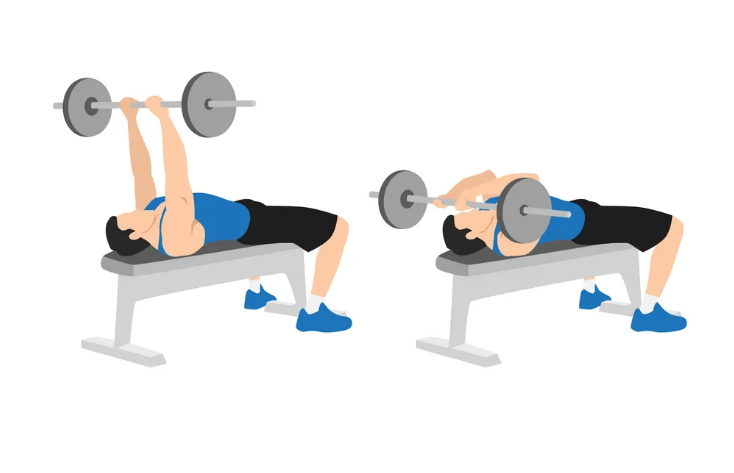When it comes to sculpting chiseled arms, the triceps are the unsung heroes. And if there’s one exercise that stands out in the arsenal of triceps workouts, it’s the skull crusher. This often overlooked yet highly effective exercise has the potential to transform your triceps, offering unparalleled gains when executed correctly.
In this comprehensive guide, Laz Tymoff dives deep into the world of skull crushers, revealing their benefits, proper technique, variations, and frequently asked questions to help you maximize your triceps development.
Understanding Skull Crushers
Skull crushers, also known as lying triceps extensions, involve lowering a weight—typically a barbell or dumbbells—towards the forehead while lying on a bench. This movement primarily targets the triceps, specifically the long head, aiding in muscle hypertrophy and strength development. The exercise not only isolates the triceps but also engages surrounding stabilizing muscles, enhancing overall upper arm strength and definition.
Benefits of Skull Crushers
Targeted Triceps Development: Skull crushers put significant emphasis on the triceps, aiding in muscle growth and strength.
Variability: Various grip positions and equipment choices allow for versatility in training, catering to individual preferences and targeting different areas of the triceps.
Improved Strength and Stability: Engaging stabilizing muscles alongside the triceps helps in overall upper body stability and strength.
Versatility: Whether you’re a beginner or an experienced lifter, skull crushers can be adapted to suit your fitness level, making them a staple in triceps workouts.

Execution and Proper Technique
- Positioning: Lie on a flat bench with your feet firmly planted on the ground. Hold the barbell or dumbbells with an overhand grip, hands slightly closer than shoulder-width apart.
- Lowering the Weight: With elbows pointed towards the ceiling, lower the weight in a controlled manner towards your forehead, keeping upper arms stationary.
- Extension: Extend your arms, lifting the weight back to the starting position without locking out the elbows.
- Breathing: Inhale while lowering the weight and exhale while extending the arms.
- Safety Precautions: Start with a manageable weight to perfect your form. Avoid using excessive weight to prevent strain or injury.
FAQs
Q1: How frequently should I include skull crushers in my workout routine?
A1: It’s recommended to incorporate skull crushers 1-2 times per week, allowing sufficient rest between sessions for muscle recovery and growth.
Q2: Are there variations of skull crushers for targeting different triceps areas?
A2: Yes, variations like close-grip skull crushers or using an EZ-bar can target different parts of the triceps, emphasizing specific areas for development.
Q3: Can skull crushers be performed without a bench?
A3: While a bench offers stability and support, skull crushers can be adapted using the floor or stability ball, although using a bench is more advisable for proper form and safety.
Q4: Should I perform skull crushers at the beginning or end of my workout?
A4: It’s beneficial to perform skull crushers after compound movements like bench presses when your triceps are pre-fatigued, maximizing their engagement during this isolation exercise.
Q5: What are common mistakes to avoid when doing skull crushers?
A5: Common mistakes include using excessive weight, flaring elbows, and not controlling the movement, which can lead to strain or injury. Focus on proper form and controlled movements.
In conclusion,
incorporating skull crushers into your triceps workout routine can unlock significant gains in muscle size, strength, and definition. By understanding proper technique, incorporating variations, and following safety precautions, you can harness the full potential of this exercise and sculpt impressive triceps. Make sure to personalize your approach, gradually increase intensity, and always prioritize form to maximize the benefits while minimizing the risk of injury.




